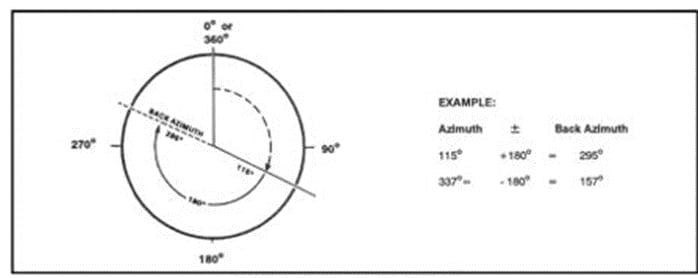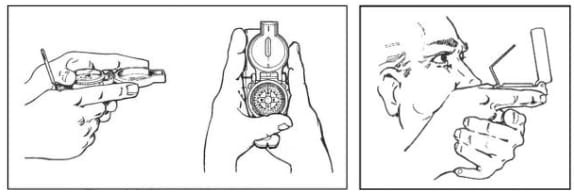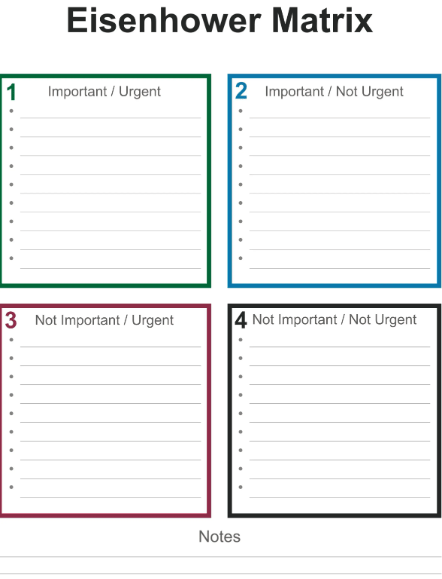- Formidable Function
- Posts
- LP/OP #6
LP/OP #6
Azimuths
Welcome back to the Listening Post/Observation Post (LP/OP).
This newsletter shares insights from the highly pragmatic military methodologies learned throughout my nearly 20 years spent as a professional in the military and private sector.
Concepts are covered briefly and clearly with respect for your time.
Every week we cover new…
Tactics, Techniques, and Procedures (TTPs)
Inspirational Exemplars
Navigating through life and work often requires a clear sense of direction. Just as in military operations, your azimuth can ensure you stay on course, while a back azimuth helps you retrace your steps and reassess your path.
This week we’re focusing on a technique…
Shooting azimuths and back azimuths with parallels to our lives in general.
Prepare to navigate.
AZIMUTH

Put simply, an azimuth is the angle or direction you need to follow when using a compass.
More precisely, an azimuth is a horizontal angle measured clockwise from a north base line. In land navigation, it is used to determine the direction from one point to another.
For example, if you want to go east, the azimuth is 90° ; if you want to go south, it is 180°.
Pros:
Establishes a clear and precise direction of travel.
Ensures accurate navigation and orientation.
Can be used with a compass and map for effective route planning.
Cons:
Requires practice reading a compass and map.
Can be affected by magnetic declination and terrain obstacles.
Business: An azimuth in business can be likened to setting a clear strategic direction or goal. This involves defining a precise target and developing a plan to achieve it.
Just like following an azimuth in navigation, a clear business strategy ensures all efforts are aligned towards the desired outcome and destination. This is especially critical if you are leading a team, but don’t be fooled, it is equally easy to get lost by yourself as a solopreneur.
Bonus: you’re assured style points if you’re able to successfully fold azimuth into your regular lexicon.
Nothing wrong with zooming out or taking a step back when everyone is kind of getting wrapped around the axel and saying, “alright, let’s shoot another azimuth and reset our course here.”
If nothing else it should spark conversation with those who may not know what an azimuth is, and you can use that as an entryway to explain and lead.
Personal: In personal development, an azimuth represents setting specific, measurable goals.
Knowing exactly where you want to go helps in creating a focused and effective plan to get there. Whether it’s career progression, fitness goals, or personal projects, having a clear direction is crucial.
Set your milestones accordingly - shoot your azimuth to put you on the right trajectory.
BACK AZIMUTH

Put simply, a back azimuth is the opposite direction of a given azimuth. It’s like turning around 180 degrees from the direction you’re facing.
To calculate a back azimuth, if the azimuth is less than 180 degrees, add 180 degrees. If the azimuth is more than 180 degrees, subtract 180 degrees.
Pros:
Helps in retracing steps and reassessing the path.
Useful for confirming position and ensuring you stay on course.
Critical for emergency situations where you need to return to a known point.
Cons:
Requires precise calculation and awareness.
Mistakes in calculation can lead to misdirection.
Business: A back azimuth in business can be likened to conducting a retrospective analysis or a pivot strategy.
When a project or launch doesn’t go as planned, retracing steps to understand what went wrong and adjusting course can save the venture. This helps in learning from past mistakes and improving future strategies. Establishing a “back azimuth” in business can be an invaluable gut check for your and/or your organization.
Remember, the first thing you should do when you’ve dug yourself into a hole is stop digging - shoot your proverbial back azimuth and get back on a better path.
Personal: Personally, a back azimuth might involve reflecting on past decisions and experiences to better understand one’s direction.
It’s about evaluating what has worked and what hasn’t, then using that insight to adjust and move forward more effectively. Sometimes we simply have to cut our losses, regroup, and reconstitute towards our rightful goals. This has parallels to the warning of the Sunk Cost Fallacy.
YOUR COMPASS

The compass is an essential tool for determining azimuths and back azimuths in land navigation.
Your general “internal compass” is just as important to navigate across all domains. Your intentions draw maps in your mind to take you desirable places. Your compass sets your true north in your professional and personal life.
Business: Using a compass in business equates to having reliable tools and processes for strategic planning and execution.
Have you given yourself and/or your team a functional compass to be guided by?
This may include data analytics, market research, and performance metrics that vector decisions and ensure alignment with business goals.
In Personal Life: In personal development, a “compass” can be synonymous with mentors, self-help resources, personal values, or practices that guide decisions and help maintain direction towards achieving life goals.
Don’t get caught without your compass and end up lost.
Inspiration: General Dwight D. Eisenhower
United States Army Supreme Commander Allied Expeditionary Forces World War II |  |
Eisenhower’s Azimuth: Dwight D. Eisenhower often affectionately referred to as "Ike," was born in Denison, Texas, and grew up in Abilene, Kansas.
During World War I, Eisenhower’s aspirations to serve in Europe were thwarted, and instead, he was tasked with commanding a unit that trained tank crews. This period of his life forced Eisenhower to shoot an azimuth, setting a clear direction and focusing on the goal ahead, even when his path took unexpected turns.
Ike’s azimuth proved to produce the optimal bearing.
Throughout the interwar years, Eisenhower served in various staff roles in the US and the Philippines, steadily climbing the ranks to Brigadier General⭐ just before the US entered World War II in 1941. His promotions and responsibilities grew, leading him to oversee the Allied invasions of North Africa and Sicily, and eventually the critical invasions of France and Germany. Each of these strategic operations was tantamount to following a precise azimuth, where Eisenhower’s clear vision and direction ensured that Allied forces were aligned and focused on their ultimate objective: the defeat of Nazi Germany.
Ike’s Back Azimuth: During the Battle of the Bulge, when German forces launched a surprise counteroffensive, Eisenhower demonstrated his ability to recalibrate and adapt.
His swift reassessment and strategic pivot allowed the Allies to regain their footing and ultimately prevail, highlighting his mastery of principles in leadership and strategy.
He shot a form of “back azimuth” to navigate to victory.
Throughout WWII and his career, Eisenhower relied on his ability to set clear directions and reassess his path, much like using a compass to determine his proverbial azimuth and back azimuth when necessary.
⭐⭐Bonus ⭐⭐
Eisenhower Matrix: A time management tool that helps individuals prioritize tasks based on urgency and importance.
This matrix/tool is named after Dwight D. Eisenhower as he was known for his exceptional ability to manage time and tasks effectively and efficiently. He is often quoted as saying:
“What is important is seldom urgent and what is urgent is seldom important.”
The matrix is divided into four quadrants:
Urgent/Important (Do First)
Not Urgent/Important (Schedule)
Urgent/Not Important (Delegate)
Not Urgent/Not important (Eliminate)

Outbrief
Set clear directions, reassess your path when necessary, and rely on dependable tools and processes.
This will make you that much more effective for yourself and/or your team.
Azimuth ⭐
Chart your course with precision and unwavering focus.
Back Azimuth ⭐⭐
Reflect, recalibrate, and steer your journey with insight.
Use your Compass ⭐⭐⭐
Let reliable tools and trusted values guide your way.
Eisenhower Matrix ⭐⭐⭐⭐
Prioritize with purpose, ensuring what truly matters gets done.
General Dwight D. Eisenhower skillfully applied these principles, showcasing the significance of having a clear strategic vision and the need to reevaluate under pressure.
Reflecting on Eisenhower's capacity to lead with both foresight and flexibility, consider integrating this week’s knowledge into your own challenges. Practice these methods in your pursuits to foster a leadership style that balances dynamism with careful thought. Progress with the precision to set well-defined goals, the insight to adjust when necessary, and the wisdom to use dependable tools for direction.
Embrace these concepts fully and watch as they enhance your effectiveness and resilience.
You are now more formidable from reading this week’s edition of the LP/OP.
Thank you for reading, genuinely.
— Ryan “DQ” DeQuiroz —